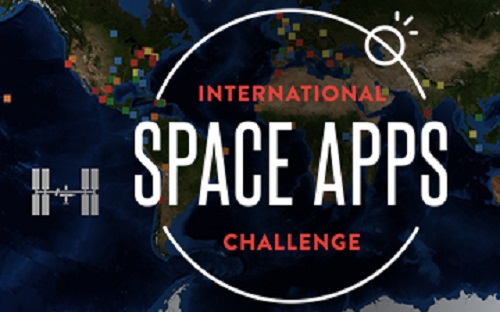NASA Unveils Space Apps Contest Champions

An interplanetary weather app, a spot-the-space-station tool, and a Mars greenhouse concept are among the winners of the 2013 International Space Apps Challenge. The contest solicited mobile apps and technologies that aid space exploration and enrich life here on Earth.
Today (May 22), a panel of judges from NASA, the European Space Agency (ESA), and partners announced the winners of the contest, which collected 770 entries between April 20-21. More than 9,000 people from 83 cities around the world contributed to the apps submitted, according to NASA.
"The International Space Apps Challenge was the culmination of months of planning, years of experimentation and thousands and thousands of hours of hard work from people across the globe who share in the excitement of building our collective future,"Nick Skytland, NASA Open Innovation Program Manager, wrote in a blog post on open.NASA. "It is a shining example that transparency, participation and collaboration are alive and well at NASA." [10 Best Space Apps in the Universe]
Many of the contestants in the challenge, which is in its second year, used free cloud storage and services provided to all participants in the challenge by the company CloudSigma. "It's amazing to see the innovation coming out of this event, and we feel honored to have been a part of it,"CloudSigma CEO and co-founder Robert Jenkins said in a statement.
The teams behind the six winning apps receive invitations to the November launch of NASA's robotic Maven (Mars Atmosphere and Volatile EvolutioN) Mars probe from Cape Canaveral, Fla., and a Spaceflight Training course at the National Aerospace Training and Research (NASTAR) Center in Pennsylvania.
The six "best in class" winners of the challenge are:
Best Use of Data: Sol
Get the Space.com Newsletter
Breaking space news, the latest updates on rocket launches, skywatching events and more!
This Kansas-produced app integrates weather data collected by the Curiosity rover on Mars with live weather conditions on Earth to give users a forecast for both planets at once.
Best Use of Hardware: ISS Base Station
A combination hardware-software entry, ISS Base Station, made in Philadelphia, includes an app that tracks the position of the International Space Station (ISS) over Earth, with a physical device that can point to the current location of the space station and alert users when it's in view.
Best Mission Concept: Popeye on Mars
This concept, submitted by a team from Athens, Greece, proposes a reusable Martian greenhouse that would use aeroponics to grow spinach on the Red Planet. The idea includes resources, sensors and technology to stabilize the greenhouse environment over the 45 days it would require to harvest spinach.
Galactic Impact: Greener Cities
This project, invented in Gothenburg, Sweden, proposes a system for integrating climate data from NASA satellites with crowd-sourced data collected from people on the ground via garden sensors and other inputs to improve the overall picture of the environment.
Most Inspiring: T-10
This London-based submission is a prototype app designed for astronauts living on the International Space Station who aim to photograph certain spots on Earth. The program would integrate weather data to alert spaceflyers when the orbiting laboratory was passing over those areas, if conditions permit photography at the time.
People's Choice Award: ChicksBook
This app, developed in Sofia, Bulgaria, won the votes of social media users around the world for its use in managing a backyard farm and tools to learn how to raise chickens.
Follow Clara Moskowitz on Twitter and Google+. Follow us @Spacedotcom, Facebook and Google+. Original article on SPACE.com.
Join our Space Forums to keep talking space on the latest missions, night sky and more! And if you have a news tip, correction or comment, let us know at: community@space.com.

Clara Moskowitz is a science and space writer who joined the Space.com team in 2008 and served as Assistant Managing Editor from 2011 to 2013. Clara has a bachelor's degree in astronomy and physics from Wesleyan University, and a graduate certificate in science writing from the University of California, Santa Cruz. She covers everything from astronomy to human spaceflight and once aced a NASTAR suborbital spaceflight training program for space missions. Clara is currently Associate Editor of Scientific American. To see her latest project is, follow Clara on Twitter.









